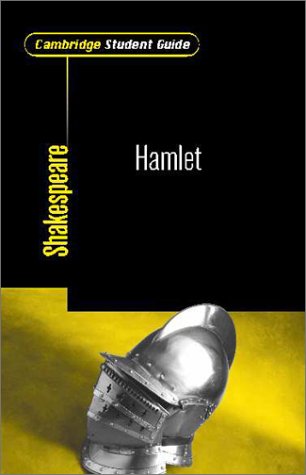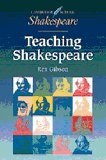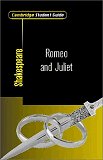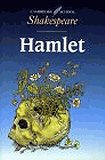
 Cambridge Student Guide to Hamlet (hier online bestellen)
Cambridge Student Guide to Hamlet (hier online bestellen)
The story:
The Cambridge Student Guide to Hamlet provides explanatory notes and guidance to help form the basis for the
understanding of the play. It is part of a new series aimed at students from 16 years upwards in schools and
colleges throughout the English-speaking world. Background information provides support and prompts inquiry
for advanced level study by drawing out issues and themes related to the text. The content of each book in
the series follows the pattern of an introduction; detailed running commentary on the text; insight into
historical, social and cultural contexts; analysis of the language; an overview of critical approaches and
different interpretations; essay-writing tips and lists of recommended resources.
Extract from book:
Act 3 , scene 1:
The soliloquy ('To be, or not to be, that is the question') is perhaps the most famous speech in all
Shakespeare. Anywhere in the world , when people are askes what they know of Shakespeare, the line they are most
likely to quote is 'To be, or not to be, that is the question'. But even this best-known line is open
to a variety of interpretations. Critics argue fiercely over its meaning, and what Hamlet has in mind as he speaks
the line. The competing interpretations group into two types:
Hamlet's own personal dilemma. Here, the major interpretation is that Hamlet is asking himself 'Should
I live, or commit suicide?'. Another peronal interpretation, less frequently offered, is 'Should I kill Claudius?'
Hamlet is not considering his own situation, but a more general question: 'Is life worth living?' This question
of the advantages and disadvantages of human existence, of whether it is better to be unhappy than not to be at all,
was a favourite debating topic in Shakespeare's time.
The most widely held interpretation is the first: that Hamlet is thinking about himself, and puzzling whether
or not he should commit suicide. Such critics as AC Bradley and John Dover Wilson see the whole soliloquy as an
extended reflection on that dilemma. Hamlet first asks himself the question, and wonders whether the most noble
course is to suffer all life's hardships or fight against them. He sees death as a 'sleep', but is troubled by what may happen
in that sleep of death. He suggests that what stops people committing suicide, in spite of all the oppressions and injustices of life,
is fear of the terror that awaits the dead. He concludes that such thinking prevents decisive action.
Other critics disagree with the 'suicide' interpretaion. They argue that Hamlet is not thinking about what he
should do in his particular situation. He makes no mention of revenge, or of Claudius, Gertrude or the Ghost,
and he never uses the personal pronoun 'I', but speaks of 'we' and 'us' and 'who'. This argues for an interpretation
that Hamlet is considering a question that applies to everyone: whether, in view of all the afflictions that cause human misery, it is better
to ahve life than not to ahve it. He is weighing up a human problem, not deciding whether to take action himself
(suicide, or killing the king and so bringing about his own death).
Buchdaten:
Cambridge Student Guide to Hamlet by Rex Gibson
Sprache: Englisch
Taschenbuch - 128 Seiten - Cambridge University Press
Erscheinungsdatum: 1. August 2002
ISBN: 0521008158
More works from the same author:
zurück zur Übersicht
|
 Cambridge Student Guide to Hamlet (hier online bestellen)
Cambridge Student Guide to Hamlet (hier online bestellen)




